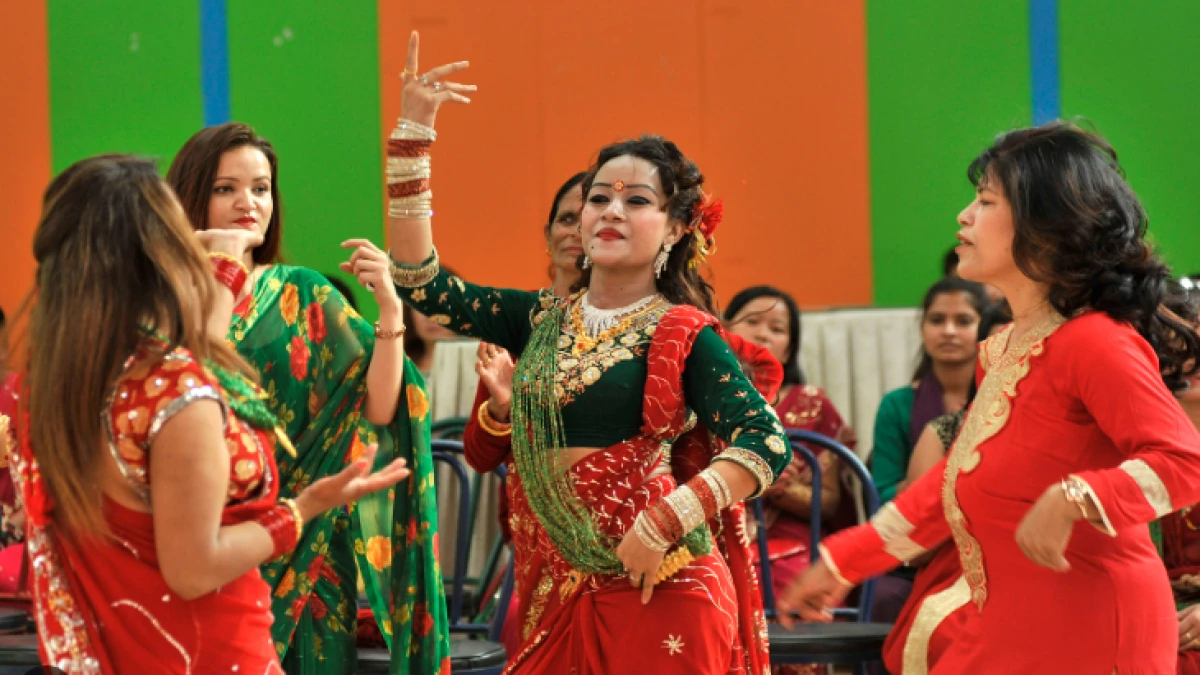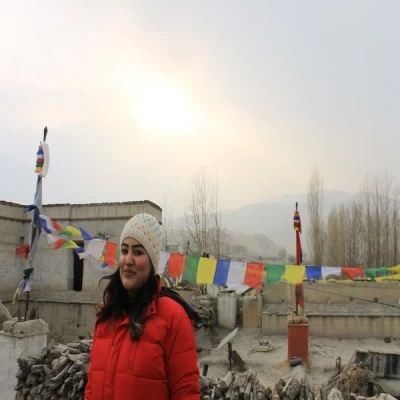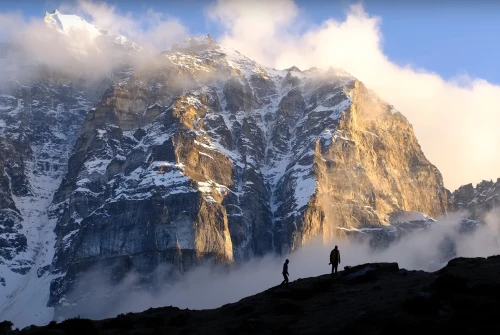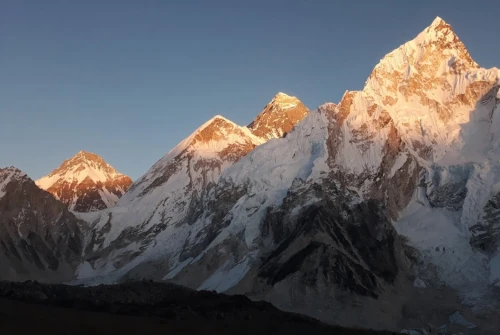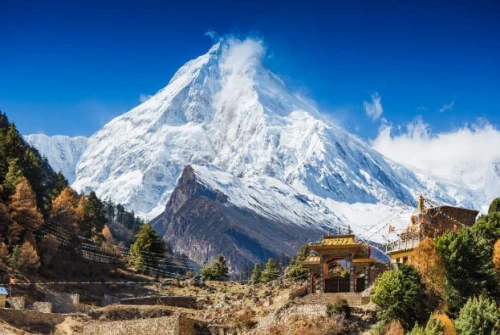The Teej Festival is one of the most celebrated and spiritually rich festivals in Nepal, deeply connected to Hindu traditions, womanhood, and the bond between Goddess Parvati and Lord Shiva. Every year, during the monsoon month of Bhadra (August–September), thousands of women dress in bright red sarees, decorate themselves with traditional jewelry, and come together to sing, dance, pray, and fast. Streets, temples, and homes are filled with a joyful energy that blends devotion and festivity in a way that is uniquely Nepali.
While Teej is primarily a festival for women, it holds meaning for the entire community. For married women, it is a time to pray for the long life and prosperity of their husbands. For unmarried women, it is a period to seek blessings for a loving, righteous, and supportive future partner. Over the centuries, Teej has transformed from a strictly religious observance into a cultural symbol of female unity, strength, and joy. Today, it is celebrated both in Nepal and among Nepali communities around the world, preserving age-old traditions while embracing modern expressions of womanhood.
The beauty of Teej lies not just in its rituals but in the stories, emotions, and values it represents—love, patience, sacrifice, and unwavering devotion. It is a time when women come together, putting aside daily responsibilities, to celebrate themselves, their relationships, and their spirituality in an environment filled with music, color, and blessings.
Historical Background and Mythological Significance
The origins of Teej are deeply rooted in Hindu mythology, especially the love story of Lord Shiva and Goddess Parvati. According to ancient scriptures, Parvati desired to marry Lord Shiva, but her wish was not fulfilled easily. Determined and steadfast, she left her royal palace and undertook a rigorous penance for many years in the forest, living on leaves, fasting for days, and meditating in harsh conditions. Her unwavering devotion and commitment eventually touched Lord Shiva’s heart, leading to their divine marriage.
This story became a symbol of faith, patience, and true love, and Teej is celebrated to honor this union. The festival reminds women of Parvati’s resilience and devotion, encouraging them to channel similar dedication in their own relationships and spiritual lives.
The word “Teej” itself is derived from the name of a small red insect that emerges during the monsoon season. Over time, this term came to symbolize the timing of the festival and the vibrant red color worn by women during the celebrations.
When is Teej Celebrated?
Teej falls on the third day of the waxing moon in the bright fortnight of the lunar month of Bhadra. While the main day of Teej is known as Hartalika Teej, the celebrations typically extend over three days, each with its own set of rituals, significance, and atmosphere.
The timing of Teej during the rainy season adds to its charm; the greenery, cool breezes, and scent of wet earth combine with the colors and music of the festival to create a uniquely magical environment. In many parts of Nepal, preparations begin weeks in advance, with markets filled with red sarees, bangles, jewelry, and special foods.
The Three Days of Teej Festival
1. Dar Khane Din – The Day of the Feast
Teej begins with Dar Khane Din, which literally means “the day of eating a lavish meal.” On this day, women gather in their maternal homes or with close friends and relatives to enjoy a grand feast before beginning their fast. The feast often includes rice pudding (kheer), curries, fruits, fried delicacies, sweets, and pickles.
It is a time of pure joy and bonding. Women sing traditional Teej geet (songs) that often narrate tales of love, marriage, and even playful complaints about in-laws or husbands. The dances are lively, filled with laughter, and create an atmosphere of warmth and togetherness. For many, Dar Khane Din is also a reunion—an opportunity to meet relatives they haven’t seen in months or years.
This day is important because it helps women prepare physically for the nirjala fast (without food or water) that follows. It is also a day to mentally and spiritually get into the mood of the festival, strengthening the bonds of sisterhood and community.
2. Hartalika Teej – The Day of Fasting and Worship
The second day is the main day of Teej and is considered the most significant. Known as Hartalika Teej, it is marked by a strict fast that is often nirjala—meaning no food or even water is consumed for the entire day. The fast is observed as an act of devotion, mirroring the penance undertaken by Goddess Parvati. Women wake up early, bathe, dress in their finest red sarees, wear green glass bangles symbolizing fertility and prosperity, and adorn themselves with gold jewelry. Many also wear pote necklaces, which are traditional symbols of marriage in Nepali culture.
Temples dedicated to Lord Shiva, particularly the Pashupatinath Temple in Kathmandu, become the heart of Teej celebrations. Thousands of women line up to offer flowers, fruits, and holy water to the Shiva Linga, chanting Shiva-Parvati mantras and praying for blessings. The atmosphere is electric, devotional songs fill the air, bells ring continuously, and the sight of women in red sarees creates a mesmerizing visual. Fasting is not just a religious duty but a spiritual journey. Many believe that by dedicating this day entirely to prayer and self-discipline, women can bring peace, prosperity, and happiness to their families, as well as ensure a harmonious married life.
3. Rishi Panchami – The Day of Purification
The third day of the festival, known as Rishi Panchami, focuses on spiritual cleansing and honoring the Sapta Rishis (seven great sages) from Hindu tradition. It is believed that during menstruation, women become ritually impure, and this day serves as an atonement for any unintentional mistakes or sins committed during that time.
Women perform purification rituals by bathing in holy rivers, ponds, or springs, often using mud and special herbs considered sacred. They also make offerings to the sages, asking for forgiveness and blessings. This day is less about festivity and more about reflection, renewal, and purification, both physically and spiritually.
Rishi Panchami brings the Teej celebrations to a close, leaving behind a sense of fulfillment, blessings, and renewed spiritual energy.
Cultural Traditions and Festivities
Teej is as much a cultural event as it is a religious one. Streets fill with processions of singing and dancing women, markets overflow with festival shoppers, and community halls host Teej programs featuring music, dance, and poetry. The madal (a traditional Nepali drum) and harmonium accompany the singing of folk songs, which can be devotional, humorous, or even subtly critical of social issues.
The dances are spontaneous and filled with life, circles of women holding hands, laughing, and moving to the rhythm. Even those who are fasting for the day join in, energized by the collective spirit of the celebration. Teej is also a rare moment when women openly express their feelings through songs, creating a cultural space for storytelling, humor, and emotional connection.
Symbolism of Colors and Attire
The dominance of red during Teej is striking. Red sarees symbolize love, passion, and marital bliss, while green bangles and pote necklaces signify fertility, prosperity, and harmony. Gold jewelry adds a touch of auspiciousness and is often passed down as family heirlooms, adding personal meaning to the attire. The uniformity of colors creates a sense of unity, while the individual styles of sarees and jewelry allow for personal expression. Together, they make Teej not just a spiritual occasion but a visual spectacle.
Teej and Women’s Empowerment
Traditionally, Teej was seen purely as a religious festival, but today it also represents women’s empowerment and solidarity. The festival gives women a space to leave behind household duties, gather with friends, and celebrate themselves.
In recent decades, Teej songs have begun addressing modern themes such as women’s rights, education, and gender equality, making the festival a platform for cultural dialogue as well as celebration. This transformation shows how Teej has adapted to changing times while holding on to its core values.
Modern-Day Celebrations and Global Reach
In cities like Kathmandu, Pokhara, and Lalitpur, Teej celebrations are now massive public events. Television channels broadcast live from temples, and local artists release special Teej songs weeks in advance. Hotels and restaurants prepare special Teej menus for Dar Khane Din, while shops showcase exclusive collections of sarees, bangles, and jewelry for the season.
Teej has also traveled beyond Nepal’s borders. Nepali communities in the USA, UK, Australia, and the Middle East celebrate the festival with equal enthusiasm, organizing cultural programs, temple gatherings, and feasts to keep their heritage alive abroad.
Tips for Experiencing Teej in Nepal
- Visit Pashupatinath Temple to witness the heart of the celebration.
- Dress traditionally in red to feel part of the festivities.
- Join in the singing and dancing—it’s one of the best ways to connect with the community.
- Respect the fasting traditions even if you don’t participate yourself.
Conclusion
The Teej Festival in Nepal is a celebration that beautifully blends spiritual devotion, cultural heritage, and female unity. It is a festival where prayers are as important as laughter, and fasting is balanced with dancing. Whether you join in as a participant or witness it as a traveler, Teej offers a deeply immersive cultural experience that reflects the heart and soul of Nepal.
